Fujifilm X-S1 Review
Fujifilm X-S1
Is this the best superzoom of them all?
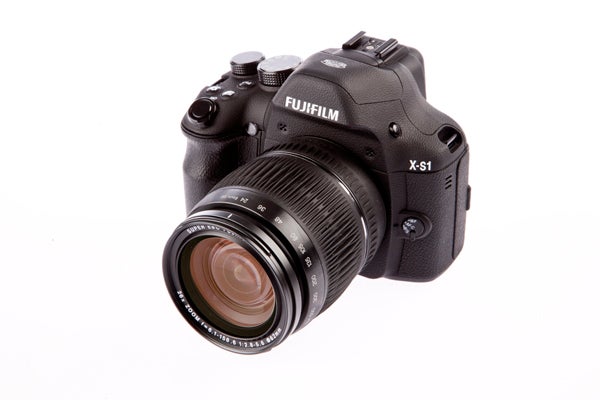
Verdict
Pros
- Manually operated zoom
- Larger than average 2/3inch sensor
- Good quality electronic viewfinder
- Much better image quality than most superzooms
Cons
- Slight sluggish AF at long telephoto
- Slow shot to shot time
- Doesn't match image quality of DSLR or CSC
Key Specifications
- Review Price: £699.99
- 2/3inch 12MP EXR CMOS sensor
- 26x optical zoom with lens-based Image Stabilisation
- ISO 100 - 3200 (exp to 12,800 at lower resolutions)
- Tiltable 3inch, 460k-dot rear LCD monitor
- 1.44m-pixel electronic viewfinder offering 100% coverage
Fitted with a manually operated 26x optical zoom that offers between 24mm and 624mm (in 35mm terms) the X-S1 also benefits from lens-based Image Stabilisation technology and a generous range of exposure modes, including three EXR-specific modes that are able to take advantage of the sensor’s unique pixel arrangement.
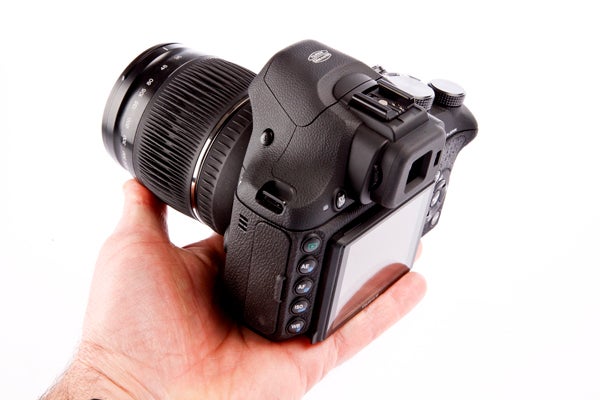
Add to this 1080p Full HD movie recording at 30fps, solid build quality and a high-resolution 1.14m pixel electronic viewfinder, and the X-S1 begins to look like an attractive prospect. Does it deliver on this promise, or are there any less obvious flaws holding it back? Let’s take a closer look and find out…
The X-S1 is built around the same 2/3inch EXR CMOS sensor as the Fuji X10. This delivers 12MP of effective resolution and is backside-wired to boost performance in low-light conditions. Maximum output at full resolution in the default 4:3 aspect is 4000 x 3000 pixels, although resolution can be lowered to Medium (6MP) and Small (3MP) if you’re shooting for web use only or simply looking to keep file sizes down. Furthermore, you can also elect to shoot in 1:1, 3:2 or 16:9 aspects.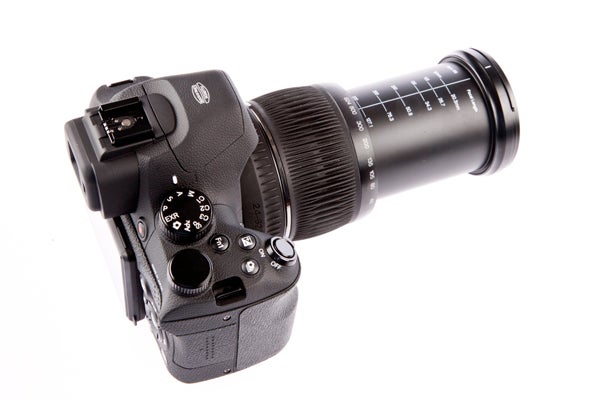
Backing the sensor up is Fuji’s dual-core EXR image processor that gives the X-S1 plenty of data-crunching oomph. This also enables the X-S1 to shoot 1080p Full HD or 720p HD movies at 30fps. You can also record 70/120/200fps high-speed movies (albeit at vastly reduced resolutions) that play back in slow motion. Sound is recorded in stereo via two microphones on the front of the camera and there’s also an external microphone port under the connectivity flap on the side of the camera. It’s also possible to shoot still images while recording movies.
Sensitivity ranges from ISO 100 to ISO 12,800 although there are some limitations, by which we mean it’s only possible to shoot maximum resolution/Fine quality JPEGs (and Raw images) up to ISO 1600. At ISO 3200 it’s still possible to shoot at 12MP, but JPEG quality must be stepped down to Normal. Moving further up the sensitivity scale It’s only possible to shoot ISO 6400 by knocking overall resolution back to 6MP, while ISO 12,800 is only possible at a maximum 3MP.
On the front of the camera the 26x optical zoom is manually operated and offers a focal range of between 24mm and 624mm in 35mm terms. We have to say that we much prefer the hands-on manual operation of the X-S1 to the fiddly rocker-switch controls found on electronically-powered zooms. Not only does it give you a more intuitive and precise control over framing, but it also allows you to switch between shooting at telephoto and wideangle extremes much, much faster. Credit to Fujifilm for sticking with manual zoom controls on all their superzoom offerings.
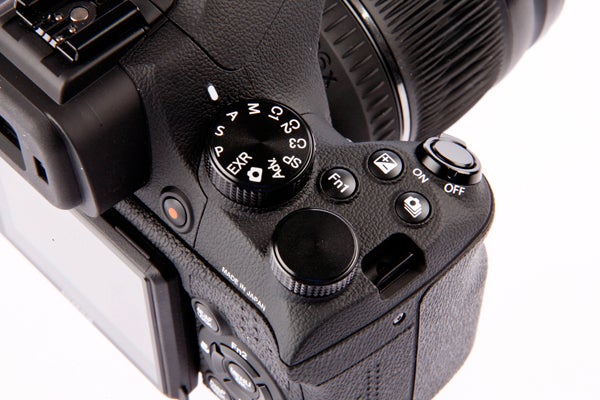
In addition to the manual zoom control, the X-S1 also sports a manual focus ring located directly behind it. While the camera is being used in AF-C or AF-S mode this ring is redundant, however flick the three-way AF mode switch on the front of the camera into the MF position and the focus ring springs to life. Should you want to fine-tune focus in the MF position then the Focus Check feature is assigned to the Fn1 button by default, and this will magnify the part of the image inside the focus box. Rather helpfully, it’s also possible to move the focus box around the screen should you wish to set focus at the edge or corner of the frame rather than the centre.
As with all recent mid- to high-end Fuji cameras, the X-S1 offers a generous range of exposure modes, including the regular creative quartet of Program, Aperture-priority, Shutter-priority and fully Manual. These are neatly backed up by Fuji’s proprietary EXR and Advanced shooting modes that variously enable you to get the best out of the X-S1 in low light, create a shallow depth of field for portraits, or even create 180-degree panoramas with a single button press. Rounding things off is an Automatic mode, 17 individual Scene modes and a number of user-defined Custom presets.
The back of the XS-1 gets a 3inch, 460k-dot monitor that can be tilted up or down to facilitate easier overhead and ground-level shooting. If you’d prefer to hold the camera to your eye the1.14million-dot electronic viewfinder offers a relatively large, bright and impressively sharp image, especially when set to 50fps (the 30fps setting increases battery life but is much too stuttery for anything other than still-life work). As we’ve said in other recent reviews, EVF technology has come a long way in the past couple of years and is now at the stage where it’s as much of a help as a hindrance – this is certainly the case with the XS-1’s electronic viewfinder.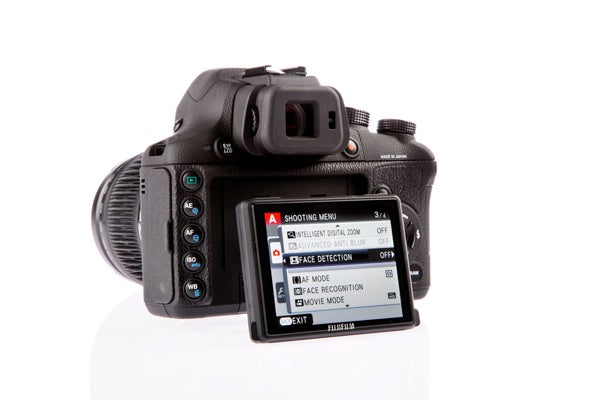
Picking it up for the first time the first thing you notice about the X-S1 is the weight. It’s a sizeable camera with similar dimensions to a mid-level DSLR such as the Canon 550D. And at just under a kilogram, it’s not particularly light either. In common with other Fuji X-series models overall build quality is of a high standard, with the metal lens rings, silver detailing and milled aluminium control dials giving the camera a classy feel overall. The camera body is treated to a texturised plastic finish that won’t necessarily be to everyone’s tastes, but does feel like it could repel the kind of everyday knocks and bumps that cameras are often subjected to.
The deep, ergonomically designed finger-grip is large enough to accommodate three fingers with ease, and is neatly complemented by a sculpted thumb-rest on the back. Together, these make the X-S1 very comfortable to hold, and while it’s just about possible to shoot single-handed the not inconsiderable weight means you’re much better off using both hands – just as you would with a medium-weight DSLR.
Using the camera in AF-S offers a choice of Multi-area, Single-area or Tracking focus modes. Using the camera in Single-area AF mode there are a total of 49 AF-points to choose from, and it’s also possible to resize the focus box and to move it around the screen as you wish. AF speed is suitably quick at wideangle/standard focal lengths, but we did notice a tendency for it to become slower at more extreme telephoto settings.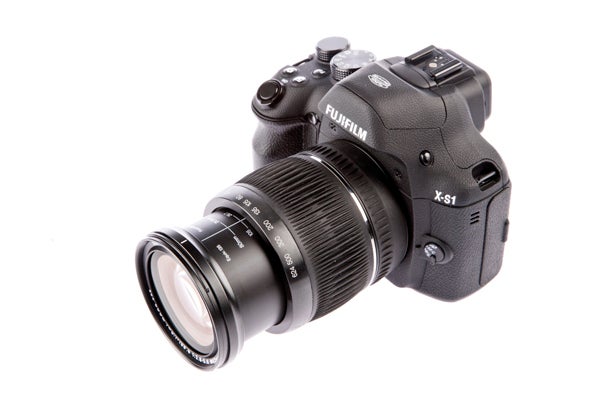
Other physical controls and buttons are plentiful, allowing you to quickly access all sorts of regularly used settings without having to trawl through the in-camera menu. On the whole these controls are well spaced and quite easy to reach. In addition to all the pre-assigned buttons that access things like ISO, White Balance and Flash settings there are also two Function buttons that can be assigned as you see fit.
The inclusion of a Focus/Exposure-lock button is a welcome addition for tricky lighting conditions, as is the one-touch Raw recording button for those situations when you think an image may benefit from some additional post-processing in a digital darkroom. In addition, the XS-1 also offers a handy level gauge that can be switched on via the Display button and used to keep horizons straight.
Start-up time is around two seconds, which although far from instant should be adequate for most situations. There are also four Continuous shooting speeds on offer: Low (3fps), Medium (5fps), High (7fps) and Super High (10fps). This last setting, however, does force resolution down to 6MP. Processing speed, even when the camera is set to Single-shot drive mode, is one of the X-S1’s few weak spots however, with images shot in Single-shot drive taking around 2.5seconds to process, during which time the camera remains inoperable. Shooting in Continuous (High) or Best Frame Capture until the buffer is full extends processing downtime even further.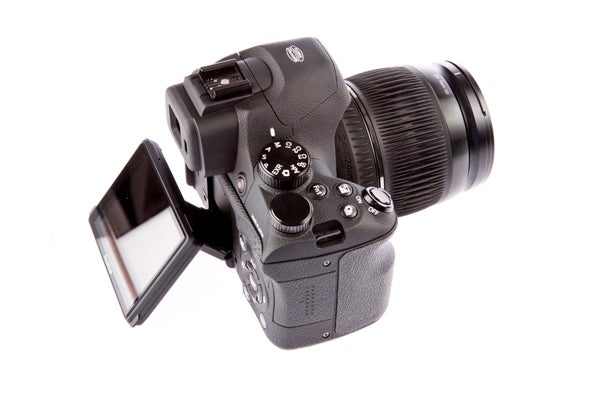
On the upside, overall image quality is perhaps the best we’ve yet seen from a superzoom bridge camera, and very much comparable to the X10 we tested not so long ago. The larger-than-average 2/3inch sensor and proprietary EXR processor that’s common to both cameras is able to consistently produce images that display vibrant colour, rich tonality and good levels of contrast. We didn’t encounter any significant problems with the 256-zone metering system either, with the X-S1 able to accurately gauge light levels and expose accordingly.
Like the X10 the X-S1 offers plenty of image processing customisation options that variously allows you to boost shadow/highlight detail and to expand the perceived dynamic range of the camera. In addition it also gets the same Film Simulation settings that are based on old 35mm Fuji film stock and which can give your images that extra bit of punch or tone things down as you see fit.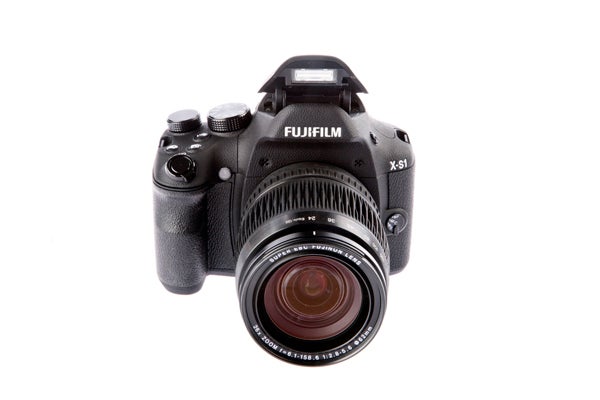
While the 24-624mm focal range of the Super EBC Fujinon lens is undoubtedly hugely flexible there is a price to be paid for the expansive focal range on offer in terms of sharpness and fine detail. That said you really need to be pixel peeping or printing images at 100% or more to notice these limitations and for most general day-to-day photography we suspect that most users will find the performance of the Fujinon lens perfectly adequate. Critical lens sharpness aside, we were impressed with the performance of the X-S1’s lens based Image Stabilisation technology though, which works well even at extended telephoto settings.
One area where the X-S1, in keeping with other Fuji cameras, performs really well is in its Macro capabilities. With two settings available – Macro and Super-Macro – it’s possible to get as close as 1cm from your subject with the focal length set to 24mm. Fans of shooting exceptionally small things up close – as well as larger things located very far away – will find the X-S1 an exceptionally flexible camera in this respect.
Verdict
The Fuji X-S1 is intended as a premium grade superzoom bridge camera. Using the same 2/3inch sensor as the Fujifilm X10, the X-S1 is capable of producing class-leading image quality within the superzoom segment. Other highlights include the manually operated 26x optical zoom, a surprisingly usable EVF, and solid overall build quality. Overall, superzoom fans will find little to complain about here, aside from the rather high price tag. Ultimately you will get better image quality from a DSLR or compact system camera, however if your heart is set on a superzoom and you have the money to spend then this is undoubtedly the model to aspire to at present.

At ISO 100 the Fuji X-S1produces sharp, noise-free images
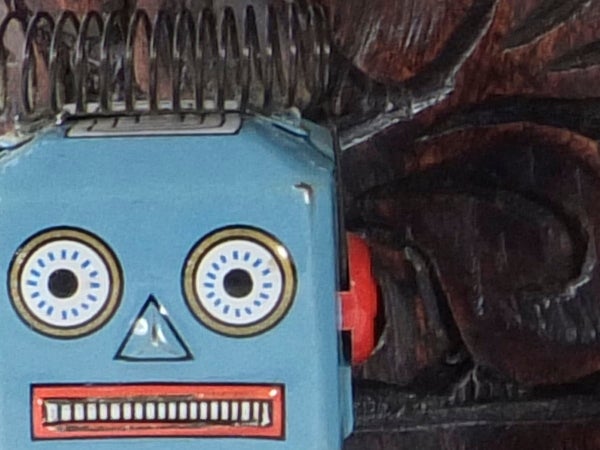
ISO 200 is almost identical to ISO 100
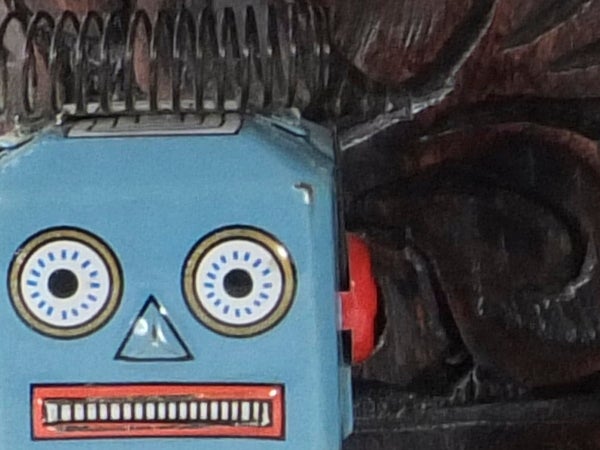
At ISO 400 some slight softening has begin to
creep in, but you’ll need to go looking for it at 100% or more
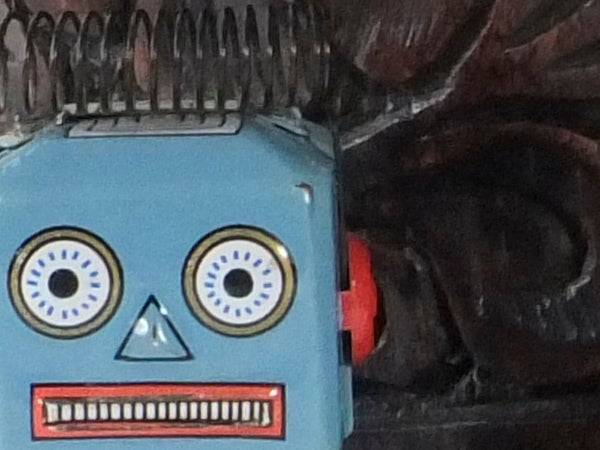
By ISO 800 image softening is more visible, with increased noise in shadow areas
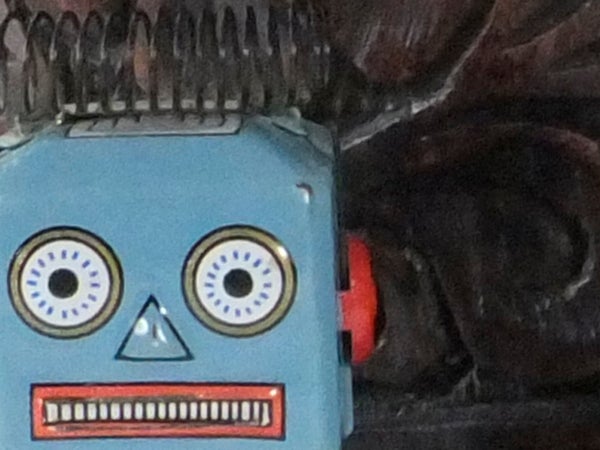
By ISO 1600 shadow detail has really begun to break down, though the image remains useable at smaller sizes
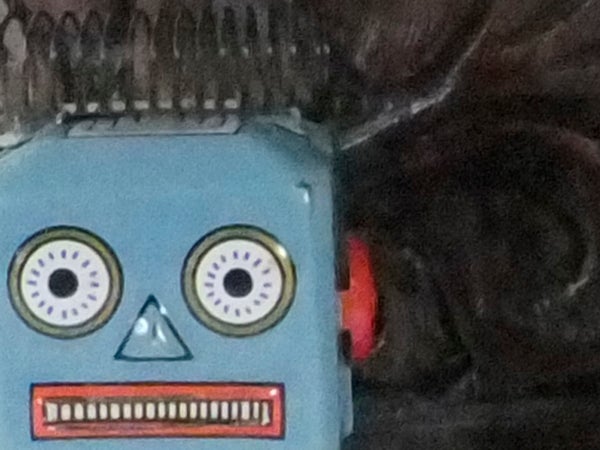
Noise and a softening of detail is easily visible at ISO 3200, even at smaller image sizes

Because ISO 6400 requires you to shoot at 6MP, the overall image size is smaller. Quality isn’t great either

ISO 12800 requires you to shoot at 3MP and the results are fairly terrible
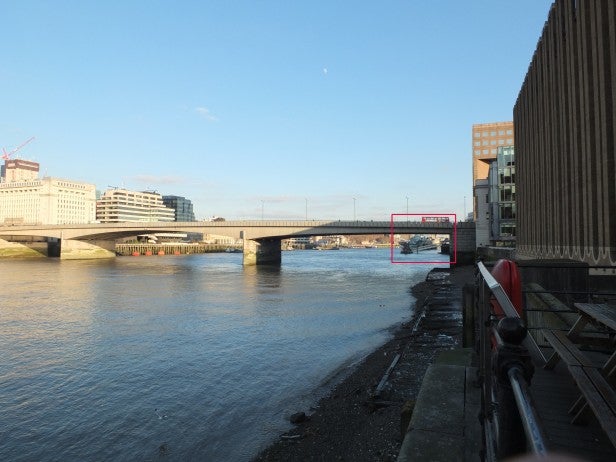 At 24mm the X-S1 is capable of capturing plenty. The red highlight box shows where HMS Belfast is (see image below).
At 24mm the X-S1 is capable of capturing plenty. The red highlight box shows where HMS Belfast is (see image below).
1/648sec @ f/5.6, 24mm, ISO 400, AWB
 At its maximum telephoto reach of 636mm (35mm equivalent) the X-S1’s lens-based Image Stabilistion technology does a good job of keeping the image sharp.
At its maximum telephoto reach of 636mm (35mm equivalent) the X-S1’s lens-based Image Stabilistion technology does a good job of keeping the image sharp.
1/256sec @ f/5.6, 636mm, ISO 250, AWB
 In addtion to its huge focal range the X-S1 also offers excellent Macro abilities.
In addtion to its huge focal range the X-S1 also offers excellent Macro abilities.
1/82sec @ f/3.2, 24mm (macro), ISO 800, AWB
 Even at mid-range sensitivities the X-S1 produces punchy, lifelike colour.
Even at mid-range sensitivities the X-S1 produces punchy, lifelike colour.
1/185sec @ f/2.8, 24mm, ISO 800, AWB
 Dynamic range can be expanded, but at it’s regular 100% setting the results aren’t at all bad.
Dynamic range can be expanded, but at it’s regular 100% setting the results aren’t at all bad.
1/622sec @ f/7.2, 100mm, ISO 400, AWB
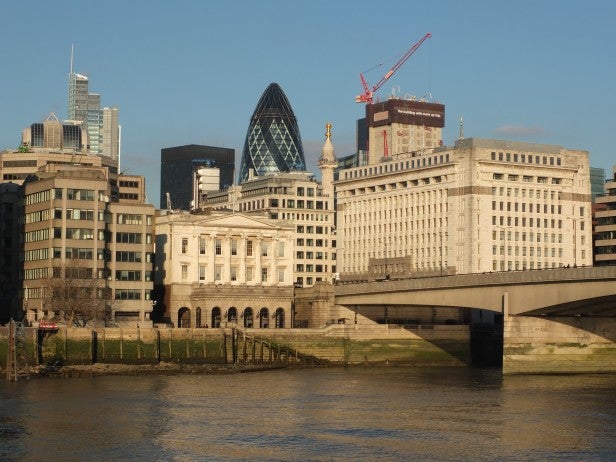 Automatic white balance (AWB) metering produces consistently accurate results.
Automatic white balance (AWB) metering produces consistently accurate results.
1/605sec @ f/5.7, 72mm, ISO 100, AWB
Trusted Score
Score in detail
-
Value 7
-
Design & Features 9
-
Image Quality 9
-
Build Quality 9

